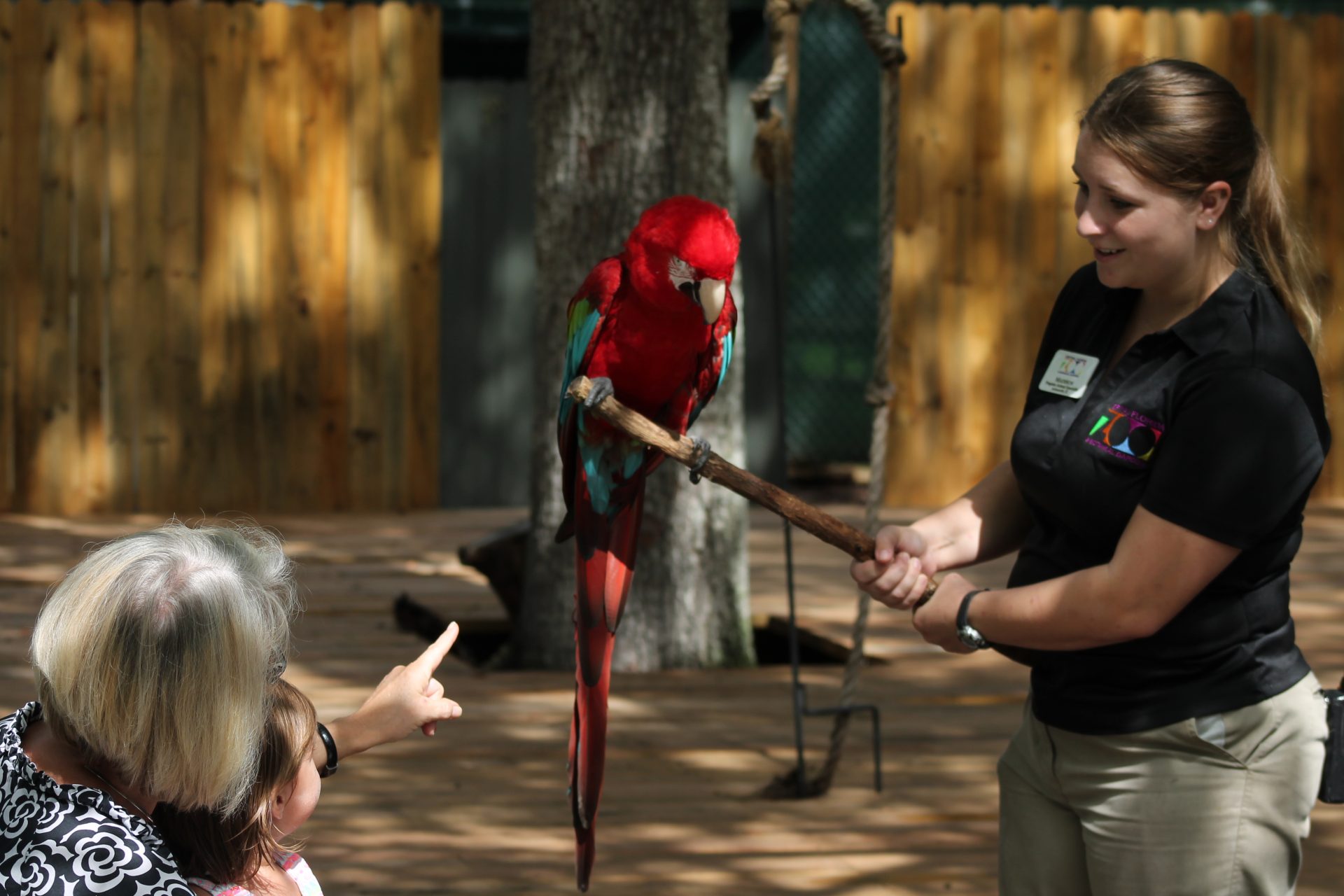
These large parrots are native to the rainforests of Central and South America. They can be found in massive flocks at clay licks or in the rainforest's canopy. They use loud squawks and trills to communicate with each other over long distances.
These huge birds are herbivorous. They are capable of moving both the upper and lower parts of their strong, sharp bills, giving them the ability to crack and crush hard nut shells. They love to eat seeds, fruit, nut meats, and foliage growing high up in the trees of the Amazon rainforest. In order to get vital minerals such as salt in their diets, these macaws will travel in large flocks to clay licks along riverbanks. Because these large, heavily feathered birds live in humid tropical forests, they rely on their bare cheek pads and large, vascularized beaks for thermal regulation. As their internal temperature rises, blood vessels in their faces and bills will dilate in order to increase blood flow close to the surface of their skin so that heat can diffuse out of their bodies; this is known as evaporative cooling. Since these birds live in neotropical rainforests, one of their biggest threats is deforestation. By purchasing recycled paper products, you can contribute to the conservation of wild macaws.

These birds are a beautiful vibrant shade of red, with blue and green on their wings. You can see these birds in the Spectrum News 13 Children's Garden, and they love to talk with our guests during the day!

Kaeli
Macaws can use their zygodactyl feet to hang upside down while eating!
Central and South America
Tropical rainforests
Height: 65–92.5 cm | Weight: 1.25–1.7 kg
Seeds, nuts, fruits, vegetation
Toucans, tayras, eagles, humans
Strong/sharp bill, sharp claws, flight, predator mimicry
2–3 eggs per clutch
Least Concern
35–40 years in natural habitat; 60–80 years in human care
